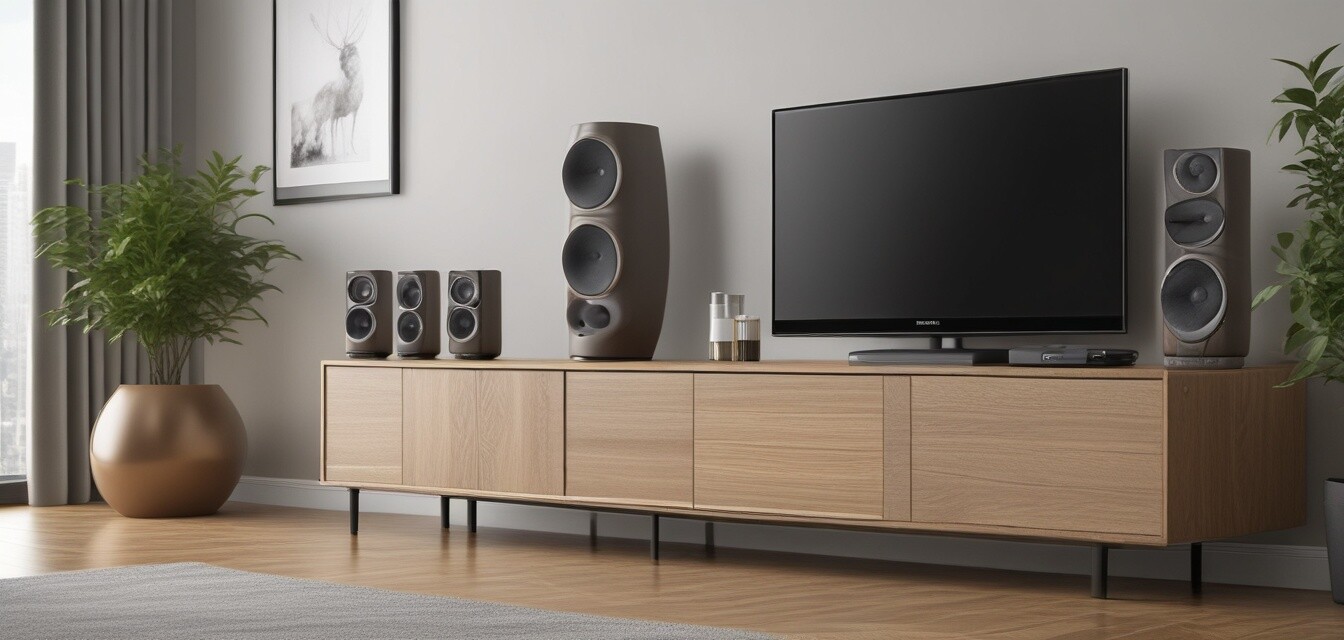
Tips for Connecting Multiple Bluetooth Speakers
Key Takeaways
- Understanding Bluetooth speaker compatibility is crucial.
- Use manufacturer's app for seamless connections when available.
- Consider sound syncing options for optimal audio experience.
- Placement of speakers affects sound distribution in your space.
- Always keep your speakers updated for best performance.
Connecting multiple Bluetooth speakers can enhance your audio experience, making it richer and more immersive. Whether you're hosting a party, enjoying a movie night at home, or simply want surround sound for your favorite playlist, knowing how to pair multiple Bluetooth speakers can dramatically improve sound coverage. In this buying guide, we’ll walk you through step-by-step instructions for pairing your devices while sharing valuable tips along the way.
Understanding Bluetooth Speaker Compatibility
Before diving into pairing methods, it’s essential to ensure your Bluetooth speakers are compatible. Here’s what you need to consider:
| Compatibility Factor | Description |
|---|---|
| Bluetooth Version | Ensure both speakers support the same Bluetooth version (e.g., 4.0, 4.2, 5.0). |
| Manufacturer Features | Some brands offer proprietary features to connect multiple speakers. |
| Audio Syncing | Check if the speaker supports audio syncing for seamless playback across devices. |
Step-by-Step Instructions for Pairing Multiple Bluetooth Speakers
- Check for Compatibility: Ensure both Bluetooth speakers can connect simultaneously and support multi-device pairing.
- Prepare Your Speakers: Make sure both speakers are fully charged and turned on.
- Activate Pairing Mode: Put both speakers in pairing mode. You typically do this by holding down the Bluetooth button until an indicator light flashes.
- Connect via Device: Go to your phone, tablet, or computer’s Bluetooth settings. Select the first speaker from the list of discoverable devices.
- Pair the Second Speaker: After the first speaker is connected, repeat the pairing process with the second speaker. Some devices may show both speakers as one audio device if combined properly.
- Use Manufacturer’s App: If your speakers come with a dedicated app, utilize it for enhanced performance and features like stereo sound or party modes.
Placement of Speakers for Optimal Sound
The arrangement of your Bluetooth speakers can greatly influence the audio experience. Here are some effective tips:
- Position speakers at ear level for the best audio clarity.
- Avoid placing speakers near walls as it can distort sound.
- Experiment with speaker angles to find the best sound direction.
- Use a triangular placement for more immersive sound.
- Consider environmental factors like furniture and outdoor space when placing outdoor speakers.
Common Concerns and Troubleshooting
If you're experiencing issues when connecting multiple Bluetooth speakers, consider these potential solutions:
| Issue | Solution |
|---|---|
| Speakers won’t connect | Ensure both speakers are in pairing mode and within range of your device. |
| Audio delay | Look for settings in the manufacturer’s app for audio sync options. |
| Sound quality issues | Check for firmware updates and ensure speakers are not too far apart. |
Final Thoughts
Connecting multiple Bluetooth speakers can elevate your listening experience, whether you're enjoying music, movies, or gaming. With the right techniques and tips at your disposal, you can achieve great sound quality and coverage suited to any occasion. Always refer to your specific speaker manuals and consider exploring our comprehensive buying guides for more insights on maximizing your audio experience.
Pros
- Enhanced sound coverage.
- Flexible placement options.
- Ability to create a multi-room audio setup.
Cons
- Potential for audio lag between devices.
- Compatibility issues with different brands.
- Increased complexity in setup.
With these tips, you'll be well-equipped to connect multiple Bluetooth speakers effectively. Enjoy experimenting with your setup and discovering new ways to bring quality sound into your space!
For more speaker-related topics, check out our collections of Bluetooth speakers and home theater systems.